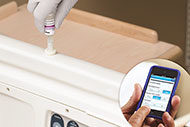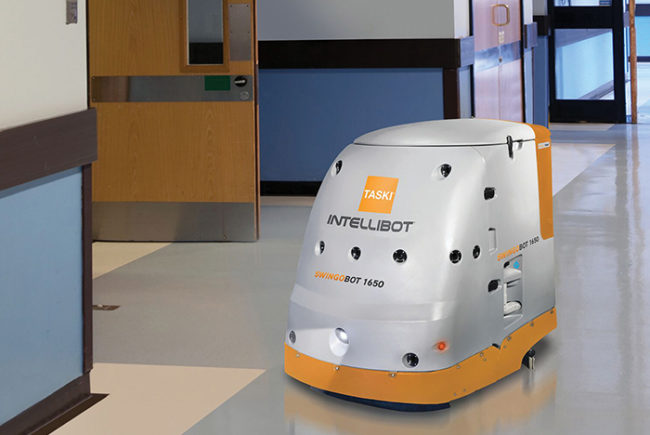Environmental services leaders face tough questions in trying to protect patients, staff and visitors from health care-associated infections (HAIs). Among them:
- What cleaning and disinfecting agents are most effective in killing bacteria that pose the greatest threat to patients?
- When trying to measure cleaning thoroughness, is it best to use adenosine triphosphate (ATP) or ultraviolet/fluorescent surface markers for monitoring?
- Among automated methods for disinfecting surfaces, which is most effective: ultraviolet light disinfection or hydrogen peroxide vapor?
- How much protection do self-disinfecting coatings provide against dangerous bacteria like Clostridium difficile, vancomycin-resistant enterococci and other pathogens?
If you’ve felt lately like you should know the answers to these questions but can’t find the definitive evidence or research to help you reach a conclusion, don’t feel bad. You’re not alone.
Despite the increasing number of studies examining HAIs over the past 15 years, there remain far more questions than answers on these vital questions about removing environmental contamination from the most commonly touched hard and soft surfaces in patient care areas. That’s the one of the key take-aways from a literature review published in August in the Annals of Internal Medicine.
Researchers who conducted the review, which was funded by the Agency for Healthcare Research and Quality, examined evidence from 80 studies published between 1998 and 2014 on current cleaning and disinfection methods, monitoring the cleanliness of patient rooms and contextual factors that may affect implementation and effectiveness. Two of their key conclusions: One, there is a lack of comparative effectiveness studies of disinfecting methods and monitoring strategies. In fact, only five of the studies examined were randomized, controlled trials, with surface contamination being the most commonly assessed outcome. And second, future research is needed to evaluate and compare newly emerging strategies, such as self-disinfecting coatings and ATP and ultraviolet/fluorescent surface markers for monitoring.
In a video that accompanies the study on the Annals of Internal Medicine website, Craig A. Umscheid, MD, an assistant professor of Medicine and Epidemiology in the Perelman School of Medicine at the University of Pennsylvania who led the systematic overview of the literature on this issue, explains the limitations of previously published studies on these topics.
Umscheid notes in the video that in most of the studies examined researchers typically examined a single agent for cleaning or disinfecting surfaces or a single method of monitoring cleaning thoroughness. In other words, the studies did not compare one agent or monitoring method against another.
In addition, outcomes were primarily measured in terms of surface contamination, Umscheid says, which isn’t necessarily what matters most to or is most easily understood by patients. To view the full video, which also includes comments from Umscheid’s colleague Jennifer Han, MD, an assistant professor of medicine and epidemiology at the same university who was a co-author of the literature review, click here.
This literature review is important if for no other reason than it confirms what many ES directors have been saying for some time now, namely that we need more independent comparative studies of the products and technologies designed to remove bacteria that can be spread from surfaces to caregivers, staff and visitors back to patients.
The lack of funding for such initiatives makes it unlikely the community will get all the answers it wants on these issues any time soon, but what’s notable and laudable about this study is not just the findings but where it was published — to an audience of physicians.
As Umscheid notes in the video, many physicians may not have an appreciation of the complexities in environmental cleaning in hospitals. His hope is that by reviewing the article, his colleagues will better understand the importance of these approaches to making the environment safer.
That’s a result that would deliver immediate benefits.
Bob Kehoe is a senior editor with Health Facilities Management.





